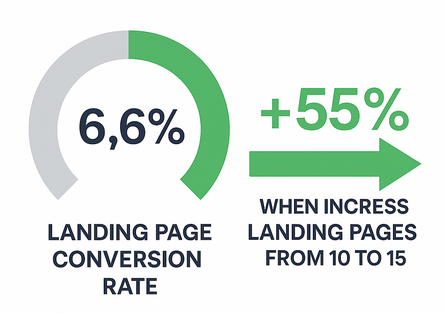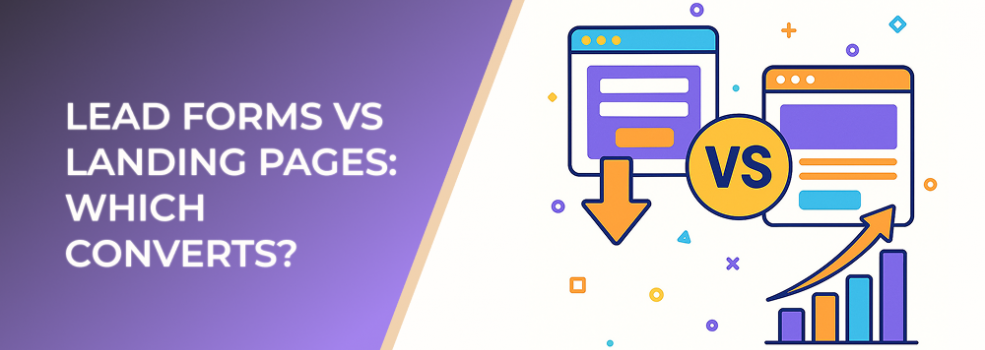As digital advertising evolves, marketers face a recurring dilemma: should they use native lead forms or direct traffic to a full landing page? Both formats can generate results, but their performance varies depending on audience behavior, intent, and campaign structure.
This article breaks down the strengths and weaknesses of each option, highlights key statistics, and helps determine which format is more likely to convert based on your objectives.
What Are Lead Forms?
Lead forms are built-in forms available on platforms such as Facebook, Instagram, and Google. They allow users to submit their information without leaving the app. These forms auto-fill user data when possible, creating a fast and seamless experience.
Advantages
-
Lower friction and fewer steps
-
Better performance on mobile
-
Higher completion rates
-
Ideal for top-of-funnel campaigns
Limitations
-
Lower intent from users
-
Less room for storytelling and product education
-
Limited design customizations
Useful Statistics
-
Native lead forms can increase conversion rates by up to 20–30% compared to traditional web forms due to reduced friction.
-
Mobile-optimized lead forms often see completion rates above 50%, significantly higher than multi-step web forms.
What Are Landing Pages?
Landing pages are standalone web pages designed to convert visitors. They provide space for visuals, product descriptions, testimonials, and long-form content.
Advantages
-
Rich, customizable user experience
-
Better for explaining complex offers
-
Higher-quality leads due to greater intent
-
Full control over branding and tracking
Limitations
-
More friction: clicks, loading, and manual typing
-
Requires design and development resources
-
Performance varies depending on speed and content quality
Useful Statistics

Average landing page conversion rate (~6.6%) and potential lead growth (+55%) when scaling landing page count
-
Landing pages with targeted personalization can increase conversions by 16% or more.
-
Pages loading in under 3 seconds see significantly higher form completion rates; slow pages can lose up to 40% of potential leads.
Lead Forms vs Landing Pages: Performance Comparison

Choosing between lead forms and landing pages depends on your goals, target audience, and offer complexity.
Conversion Rate Differences
Lead forms delivered roughly 3× the conversion rate of landing pages in LinkedIn campaigns
-
Lead forms generally win for quick, simple submissions, especially on mobile.
-
Landing pages typically produce higher-intent leads, even if the overall submission count is lower.
Lead Quality Insights
-
Leads from landing pages tend to be more qualified because users spend more time engaging before submitting.
-
Short native lead forms can produce higher volumes but often require additional qualification.
Cost Efficiency
-
Marketers report that native lead forms can reduce cost per lead by up to 25% due to their lower friction.
-
However, landing pages may deliver better long-term ROI when targeting high-value customers.
When to Use Lead Forms
-
Running mobile-first or high-volume campaigns
-
Promoting simple offers like newsletters or quick sign-ups
-
Testing a new audience or interest segment
When to Use Landing Pages
-
Selling premium or complex products
-
Educating users before conversion
-
Running retargeting or mid-funnel campaigns
Blended Approach: Best of Both Worlds
Many marketers use both formats depending on funnel stage. For example:
-
Lead forms for initial capture
-
Landing pages for nurturing, education, and high-value actions
This combination helps maximize volume while maintaining lead quality.
Conclusion
There is no universal winner in the lead forms vs landing pages debate. Lead forms deliver speed and volume, while landing pages provide depth and higher-intent conversions. Your best choice depends on campaign goals, target audience behavior, and the complexity of your offer.

